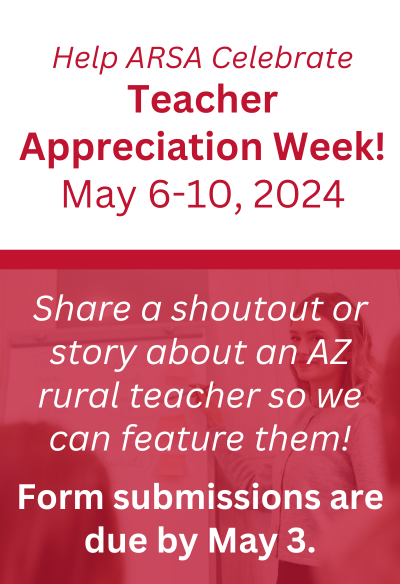5 Steps for Effective Advocacy in Public Education
by Cole Young, M.Ed
Superintendent, Mohave Valley School District #16
As the MVSD Superintendent, I see advocacy in education as stepping into a whole new world—a world where storytelling (communicating) becomes just as important as teaching math or science. It's about painting a picture of our students' successes, our schools' achievements, and our district's vision. It's storytelling at its finest; let me tell you, it's a game-changer.
Think about it. We're not just advocating for our students or our district but for the very existence of public education. We're showing parents that our district is more than just a place where kids learn—it's a community, a family, and a place where ‘excellence is unleashed and futures are ignited.’
Advocacy in education extends beyond advocating for students; it encompasses advocating for the betterment of the educational profession as a whole. As educators, we are familiar with teaching constructs, such as Curriculum, Instruction, Assessment, and Intervention, and continually refine our skills in these areas. However, advocating for education itself is a newer challenge that has changed the landscape of public education.
In the early 90s, public education was thrust into a world of advocacy when Public Charter schools emerged, introducing competition and the need to market public education as a choice. Previously, the local public school was often the only option, but now, public schools must demonstrate their effectiveness and share their students' learning experiences with the community. This shift has required Districts to step out of their comfort zones and actively promote their schools.
So, how do we do it? How do we tell our school's story in a way that captivates and engages? Well, it starts with being intentional. It's about positioning ourselves in places where our voice can be heard, where our story can be told. Whether at a community meeting, a local event, or even just a casual conversation with a parent, every interaction is an opportunity to advocate for our school.
And then there's the one-pager—the perfect tool for storytelling. This one-page summary of our District's accomplishments, vision, and challenges is our ticket to sparking conversations and building connections. It's our chance to showcase the amazing things happening at our schools and invite others to participate.
But advocacy isn't just about talking—it's also about listening. It's about hearing the needs and concerns of our community and finding ways to address them. It's about building relationships and showing that we're not just there to talk but to listen and collaborate.
So, the next time we have a conversation about education, let's remember that we're not just talking about our district and its struggles or needs—we're telling its story. And in that story lies the power to engage, inspire, and advocate for the betterment of our students, district, and community.
Our responsibility requires reflective growth through learning how communication can be leveraged to all we encounter in a market of countless informational pathways that our stakeholders use to get their information. Intentional and effective advocacy makes our district relevant within the community. It allows us to showcase the increased value we bring economically and in terms of nurturing students. Advocacy for public education is critical; If we do not advocate, who will?
Here are five critical steps to effective advocacy for public education:
Inform and Educate: Educate the community about your district's achievements, vision, and the value it provides to students and the community. Use facts, figures, and success stories to illustrate your district's positive impact.
Engage with Key Stakeholders: Build relationships with key community influencers, such as local business leaders, legislators, and non-profit organizations. Attend meetings and events where these stakeholders gather to share your district's story and build support.
Leverage Existing Relationships: Use your existing network of contacts to connect with new stakeholders. Encourage those who support your district to share its story with others, expanding your reach and influence.
Focus on Long-Term Goals: Advocate for your district's long-term goals and vision, rather than just immediate needs. This approach builds credibility and shows that your district is focused on sustainable growth and improvement.
Be Transparent and Authentic: Be honest about your district's challenges and needs and highlight its strengths and successes. Authenticity builds trust and credibility, making your advocacy efforts more effective.


